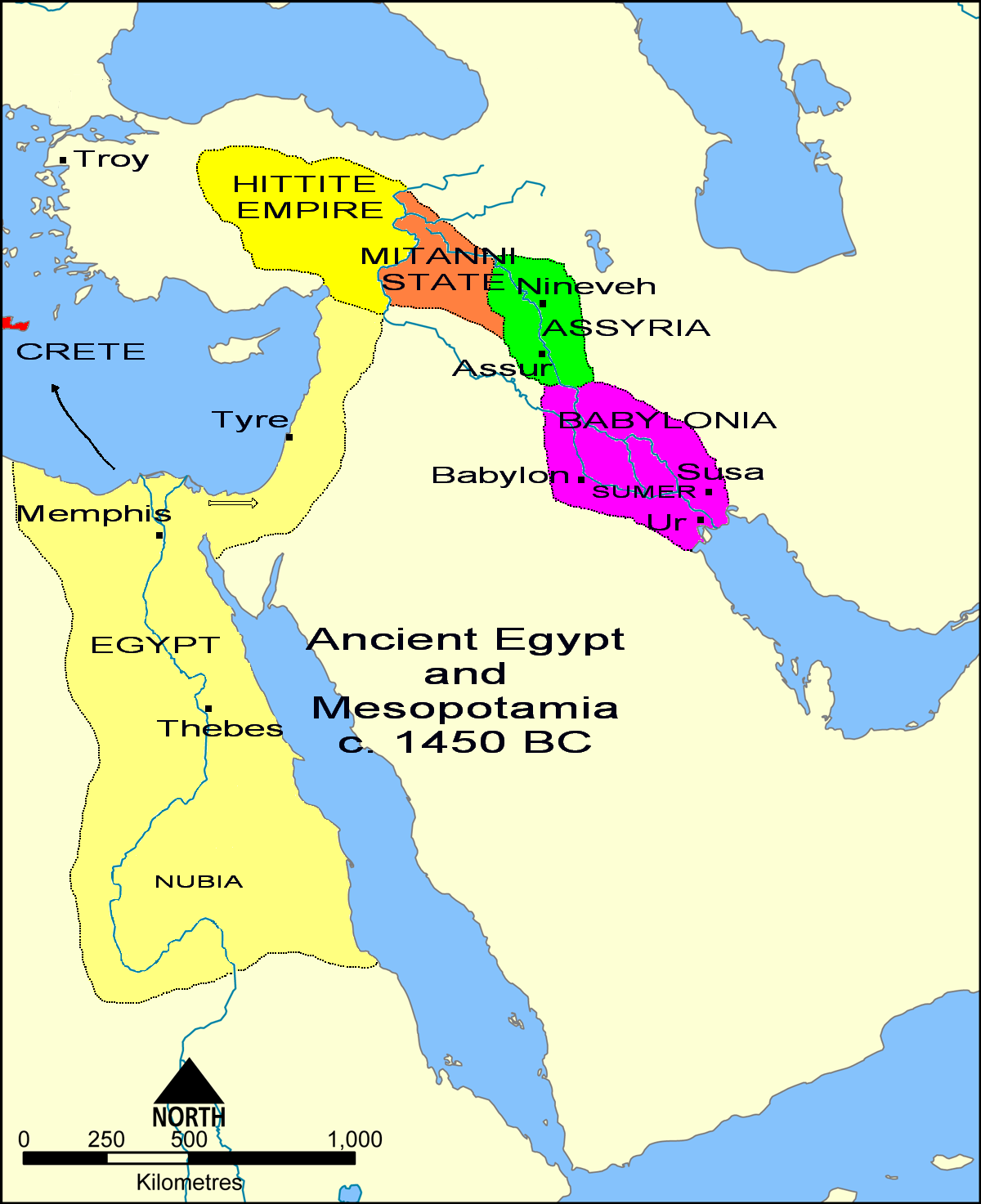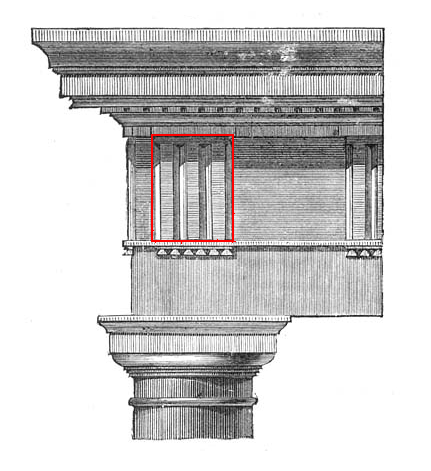|
Theban Treasury (Delphi)
The Treasury of the Thebans at Delphi was built in the Doric order and made entirely out of local limestone from the quarries of St. Elias close to the town of Chrisso. It was situated a few meters below the first turn of the Sacred Way, the processional route in the sanctuary of Apollo. It had been dedicated by the Thebans for their victory against the Lacedaemonians at Leuctra (371 BC). Description Shortly after their victory against the Lacaedemonians at the Battle of Leuctra in 371 BC, a landmark of the brief Theban supremacy in the political life of Greece, the Thebans dedicated at the sanctuary of Apollo a treasury built in the Doric order. It was the largest treasury in dimensions of Delphi, situated close to the SW corner of the sanctuary. Rectangular in plan, measuring 12.29 by 7.21 meters, it stood on a crepis with two steps. It was constructed entirely out of local limestone from the quarries at St. Elias, a particularly hard stone with bluish-grey shades, which ac ... [...More Info...] [...Related Items...] OR: [Wikipedia] [Google] [Baidu] |
Site Archéologique De Delphes (1)
Site most often refers to: * Archaeological site * Campsite, a place used for overnight stay in an outdoor area * Construction site * Location, a point or an area on the Earth's surface or elsewhere * Website, a set of related web pages, typically with a common domain name It may also refer to: * Site, a National Register of Historic Places property type * SITE (originally known as ''Sculpture in the Environment''), an American architecture and design firm * Site (mathematics), a category C together with a Grothendieck topology on C * ''The Site'', a 1990s TV series that aired on MSNBC * SITE Intelligence Group, a for-profit organization tracking jihadist and white supremacist organizations * SITE Institute, a terrorism-tracking organization, precursor to the SITE Intelligence Group * Sindh Industrial and Trading Estate, a company in Sindh, Pakistan * SITE Centers, American commercial real estate company * SITE Town, a densely populated town in Karachi, Pakistan * S.I.T.E Indust ... [...More Info...] [...Related Items...] OR: [Wikipedia] [Google] [Baidu] |
Theban Hegemony
The Theban hegemony lasted from the Theban victory over the Spartans at Leuctra in 371 BC to their defeat of a coalition of Peloponnesian armies at Mantinea in 362 BC, though Thebes sought to maintain its position until finally eclipsed by the rising power of Macedon in 346 BC. Externally, the way was paved for Theban ascendancy by the collapse of Athenian power in the Peloponnesian War (431–404 BC), through the weakening of the Spartans by their oliganthropia (demographic decline) and by the inconclusive Corinthian War (395–386 BC). Internally, the Thebans enjoyed two temporary military advantages: #The leaders of the Theban oligarchy at the time, Epaminondas and Pelopidas, were fully committed to an aggressive foreign policy and could be relied on to win any battle and #The same leaders had instituted tactical improvements in the Theban heavy infantry (e.g. longer spears, the use of a wedge-shaped formation of spearmen), which had yet to catch on among their rivals ... [...More Info...] [...Related Items...] OR: [Wikipedia] [Google] [Baidu] |
Ancient Thebes (Boeotia)
Thebes (; ell, Θήβα, ''Thíva'' ; grc, Θῆβαι, ''Thêbai'' .) is a city in Boeotia, Central Greece. It played an important role in Greek myths, as the site of the stories of Cadmus, Oedipus, Dionysus, Heracles and others. Archaeological excavations in and around Thebes have revealed a Mycenaean settlement and clay tablets written in the Linear B script, indicating the importance of the site in the Bronze Age. Thebes was the largest city of the ancient region of Boeotia and was the leader of the Boeotian confederacy. It was a major rival of ancient Athens, and sided with the Persians during the 480 BC invasion under Xerxes I. Theban forces under the command of Epaminondas ended Spartan hegemony at the Battle of Leuctra in 371 BC, with the Sacred Band of Thebes, an elite military unit of male lovers celebrated as instrumental there. Macedonia would rise in power at the Battle of Chaeronea in 338 BC, bringing decisive victory to Philip II over an alliance o ... [...More Info...] [...Related Items...] OR: [Wikipedia] [Google] [Baidu] |
Ancient Greek Buildings And Structures In Delphi
Ancient history is a time period from the beginning of writing and recorded human history to as far as late antiquity. The span of recorded history is roughly 5,000 years, beginning with the Sumerian cuneiform script. Ancient history covers all continents inhabited by humans in the period 3000 BCAD 500. The three-age system periodizes ancient history into the Stone Age, the Bronze Age, and the Iron Age, with recorded history generally considered to begin with the Bronze Age. The start and end of the three ages varies between world regions. In many regions the Bronze Age is generally considered to begin a few centuries prior to 3000 BC, while the end of the Iron Age varies from the early first millennium BC in some regions to the late first millennium AD in others. During the time period of ancient history, the world population was already exponentially increasing due to the Neolithic Revolution, which was in full progress. While in 10,000 BC, the world population stood ... [...More Info...] [...Related Items...] OR: [Wikipedia] [Google] [Baidu] |
Triglyph
Triglyph is an architectural term for the vertically channeled tablets of the Doric frieze in classical architecture, so called because of the angular channels in them. The rectangular recessed spaces between the triglyphs on a Doric frieze are called metopes. The raised spaces between the channels themselves (within a triglyph) are called ''femur'' in Latin or ''meros'' in Greek. In the strict tradition of classical architecture, a set of guttae, the six triangular "pegs" below, always go with a triglyph above (and vice versa), and the pair of features are only found in entablatures of buildings using the Doric order. The absence of the pair effectively converts a building from being in the Doric order to being in the Tuscan order. The triglyph is largely thought to be a tectonic and skeuomorphic representation in stone of the wooden beam ends of the typical primitive hut, as described by Vitruvius and Renaissance writers. The wooden beams were notched in three separate pla ... [...More Info...] [...Related Items...] OR: [Wikipedia] [Google] [Baidu] |
Metope
In classical architecture, a metope (μετόπη) is a rectangular architectural element that fills the space between two triglyphs in a Doric frieze, which is a decorative band of alternating triglyphs and metopes above the architrave of a building of the Doric order. Metopes often had painted or sculptural decoration; the most famous example are the 92 metopes of the Parthenon marbles some of which depict the battle between the Centaurs and the Lapiths. The painting on most metopes has been lost, but sufficient traces remain to allow a close idea of their original appearance. In terms of structure, metopes may be carved from a single block with a triglyph (or triglyphs), or they may be cut separately and slide into slots in the triglyph blocks as at the Temple of Aphaea. Sometimes the metopes and friezes were cut from different stone, so as to provide color contrast. Although they tend to be close to square in shape, some metopes are noticeably larger in height or in w ... [...More Info...] [...Related Items...] OR: [Wikipedia] [Google] [Baidu] |
Siphnian Treasury
The Siphnian Treasury was a building at the Ancient Greek cult centre of Delphi, erected to host the offerings of the polis, or city-state, of Siphnos. It was one of a number of treasuries lining the "Sacred Way", the processional route through the Sanctuary of Apollo, erected to win the favor of the gods and increase the prestige of the donor polis. It was one of the earlier surviving buildings of this type, and its date remains a matter for debate, with the most plausible date being around 525 BC. Until recently it was often confused or conflated with the neighbouring Cnidian Treasury, a similar but less elaborate building, as the remains of the two had become mixed together and earlier theoretical reconstructions used parts of both. The people of Siphnos had gained enormous wealth from their silver and gold mines in the Archaic period (Herodotus III.57) and used the tithe of their income to erect the treasury, the first religious structure made entirely out of marble. The bui ... [...More Info...] [...Related Items...] OR: [Wikipedia] [Google] [Baidu] |
Crepis
''Crepis'', commonly known in some parts of the world as hawksbeard or hawk's-beard (but not to be confused with the related genus ''Hieracium'' with a similar common name), is a genus of annual and perennial flowering plants of the family Asteraceae superficially resembling the dandelion, the most conspicuous difference being that ''Crepis'' usually has branching scapes with multiple heads (though solitary heads can occur). The genus name ''Crepis'' derives from the Greek ''krepis'', meaning " slipper" or "sandal", possibly in reference to the shape of the fruit.''Crepis''. Flora of North America. The genus is distributed throughout the Northern Hemisphere and |
Treasury
A treasury is either *A government department related to finance and taxation, a finance ministry. *A place or location where treasure, such as currency or precious items are kept. These can be state or royal property, church treasure or in private ownership. The head of a treasury is typically known as a treasurer. This position may not necessarily have the final control over the actions of the treasury, particularly if they are not an elected representative. The adjective for a treasury is normally treasurial. The adjective "tresorial" can also be used, but this normally means pertaining to a ''treasurer''. History The earliest found artefacts made of silver and gold are from Lake Varna in Bulgaria dated 4250–4000 BC, the earliest of copper are dated 9000–7000 BC. The term ''treasury'' was first used in Classical times to describe the votive buildings erected to house gifts to the gods, such as the Siphnian Treasury in Delphi or many similar buildings er ... [...More Info...] [...Related Items...] OR: [Wikipedia] [Google] [Baidu] |
Battle Of Leuctra
The Battle of Leuctra ( grc-gre, Λεῦκτρα, ) was a battle fought on 6 July 371 BC between the Boeotians led by the Thebans, and the Spartans along with their allies amidst the post-Corinthian War conflict. The battle took place in the vicinity of Leuctra, a village in Boeotia in the territory of Thespiae. The Theban victory shattered Sparta's immense influence over the Greek peninsula, which Sparta had gained with its victory in the Peloponnesian War a generation earlier. Prelude In 371 BC, the newly established democracy of Thebes had elected four Boeotarchs, the traditional title of the generals of the Boeotian League, and so proclaimed their intention of reconstituting the aforementioned league that Sparta had disbanded.Tritle 1987, p. 80 During this period, Thebes had an ally in Athens, but Athens was far from happy with the treatment Plataea had received. When it came to swearing an oath to respect the treaty, Sparta swore on behalf of itself and its allies ... [...More Info...] [...Related Items...] OR: [Wikipedia] [Google] [Baidu] |
Delphi
Delphi (; ), in legend previously called Pytho (Πυθώ), in ancient times was a sacred precinct that served as the seat of Pythia, the major oracle who was consulted about important decisions throughout the ancient classical world. The oracle had origins in prehistory and it became international in character and also fostered sentiments of Greek nationality, even though the nation of Greece was centuries away from realization. The ancient Greeks considered the centre of the world to be in Delphi, marked by the stone monument known as the omphalos (navel). The sacred precinct of Ge or Gaia was in the region of Phocis, but its management had been taken away from the Phocians, who were trying to extort money from its visitors, and had been placed in the hands of an amphictyony, or committee of persons chosen mainly from Central Greece. According to the Suda, Delphi took its name from the Delphyne, the she-serpent ('' drakaina'') who lived there and was killed by the god Apo ... [...More Info...] [...Related Items...] OR: [Wikipedia] [Google] [Baidu] |
Leuctra
Leuctra or Leuktra ( grc, τὰ Λεῦκτρα, tà Leûktra, grc, τὸ Λεῦκτρον, tò Leûktron, label=none ) was a village of ancient Boeotia, situated on the road from Thespiae to Plataea, and in the territory of the former city. Its name only occurs in history on account of the celebrated Battle of Leuctra fought in its neighbourhood between the Spartans and Thebans in 371 BCE, by which the supremacy of Sparta was demolished. In the plain of Leuctra, was the tomb of the two daughters of Scedasus, a Leuctrian, both were violated by Spartans, and had afterwards slain themselves; this tomb was crowned with wreaths by Epaminondas Epaminondas (; grc-gre, Ἐπαμεινώνδας; 419/411–362 BC) was a Greek general of Thebes and statesman of the 4th century BC who transformed the Ancient Greek city-state, leading it out of Spartan subjugation into a pre-eminent posit ... before the battle, since an oracle had predicted that the Spartans would be defeated ... [...More Info...] [...Related Items...] OR: [Wikipedia] [Google] [Baidu] |
.jpg)




.jpg)
.jpg)

